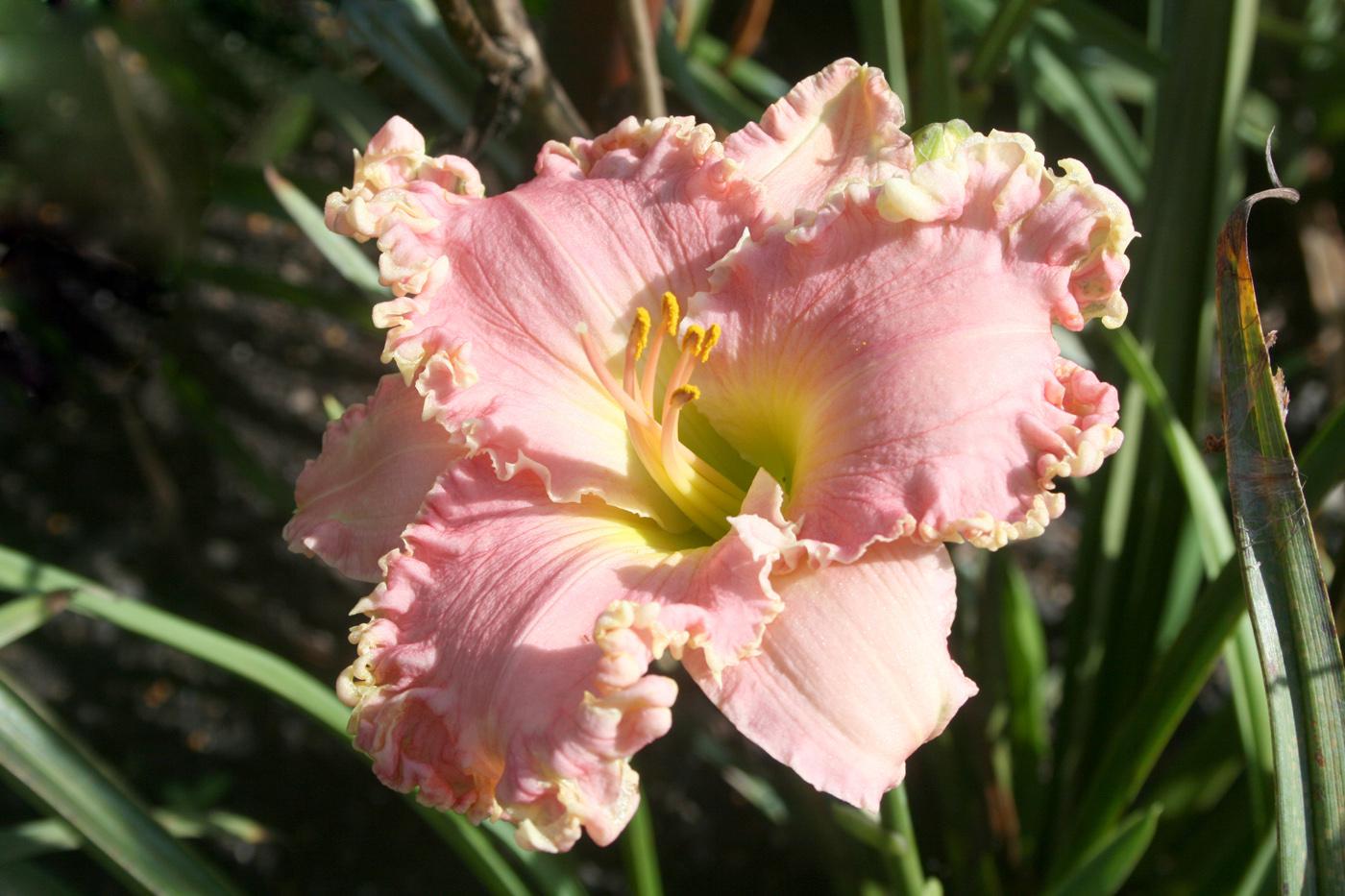Information Possibly Outdated
The information presented on this page was originally released on July 23, 2012. It may not be outdated, but please search our site for more current information. If you plan to quote or reference this information in a publication, please check with the Extension specialist or author before proceeding.
Plant daylilies in all shapes, sizes, colors
Daylilies are extremely easy-to-grow flowering perennials, and their variety gives gardeners plenty of ways to create unique, colorful landscape designs.
They come in every color, shape, and size imaginable…and some you probably never dreamed possible. The orange ditch lilies, Hemerocallis fulva and H. flava, have been developed into at least 30,000 named selections. These selections include daylilies with blooms that are red, peach, white, and yellow; vibrant doubles; petites; gold-edged ruffles; and spidery flowers with long linear petals. There are even fragrant night-blooming selections.
Daylilies have different bloom periods, and some varieties bloom from spring to fall. Be sure to select daylilies that give season-long blooms.
Daylilies are perfect for planting around the patio or under windows so you can enjoy their sweet smells while relaxing after a long day. Be sure to plant a mix of early, mid-, and late-season bloomers to enjoy all summer long. You can extend the bloom season by planting selections that will rebloom. As the name implies, daylily flowers open for only one day. For fresh bouquets, be sure to pick open flowers early in the morning.
Typically, daylilies are sold growing in one- to two-gallon nursery containers. Planting is as easy as removing the plants from the container and gently loosening the root ball. The planting hole should no deeper than the nursery container. For best flowering, daylilies should be grown in full sun, or in at least 6 hours of sunlight. Consistent soil moisture is important for daylilies to thrive.
Be aware that many daylilies grow to be two to three feet tall and should be planted in the back of the bed. The small and miniature selections in the twelve- to eighteen-inch range are suitable for the front row. Even in the heat of our Mississippi summers, daylilies will continue to set flowers and bloom. While they are adaptable to most soil conditions, in Mississippi they should be planted in raised beds to enhance drainage. Daylilies are suitable for use as specimen plants, but I think mass planted daylilies are extra special. They’re vigorous, fast growing and can form a dense mat in just a couple of years.
Daylilies should be divided every few years in either the spring or the fall. You do not need special tools for dividing plants, though any tools used must be sharp. A garden spade or a fork and a knife (an old bread knife works well) and maybe a small, pointed saw will get you started. Dig the entire daylily out of the ground and shake off excess soil. This approach will cause less damage and enable you to make more divisions.
First, identify the growing points, because these are where the division cuts will be made. Next, use a sharp tool to cut apart the clump so that each division has at least one fan of leaves with roots attached. When replanting, prune off about half of the foliage to conserve water as the roots begin to regrow. Plant the division’s crown at the same level in the ground as it was on the original plant. Arrange the pieces in a random fashion so they do not all grow in the same direction. Replant in new areas of the garden or share with gardening friends.










